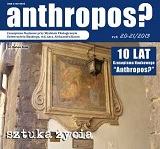"Szlachetny, straszliwy, nieodparcie fascynujący" - terroryzm jako sztuka życia. Zamach w Bostonie a tradycja rosyjskiego terroryzmu rewolucyjnego
"Noble, terrible, irresistibly fascinating": terrorism as the art of life Boston attack and tradition of Russian revolutionary terrorism
Author(s): Jacek MikołajczykSubject(s): Cultural Essay, Political Essay, Societal Essay
Published by: Instytut Nauk o Kulturze i Studiów Interdyscyplinarnych - Wydział Filologiczny - Uniwersytet Śląski
Keywords: Terrorism; society; fundamentalism; 19th Century's Russia; Russian revolutionary terrorism
Summary/Abstract: By definition, members of terrorist organizations are excluded from the frames of society. Since they do not acknowledge governments, governments do not consider them rightful citizens. On the other hand, a number of members of excluded groups are either being either recruited as terrorists or themselves starting terrorist activities. According to "New York Times" reporters, Tamerlan Tsarnayev, a terrorist responsible for the recent Boston attack, turned to fundamentalism only after being excluded from his boxing club, contradictory to official version according to which he had become fundamentalist when traveling to his native Dagestan and Chechnya. In the history of terrorism, we can find a lot of similar examples of people who decided to join radical circles. In 19th Century's Russia, women were the biggest "excluded" group of the society and many of them chose to team up with revolutionary activists, who tended to consider them as equal to men. Vera Zasulich was the most famous female revolutionary of her time. She was responsible for the terrorist attack on general Trepov, a high official of the Russian government, and many terrorists in Russia and Europe followed her example.
Journal: Anthropos?
- Issue Year: 2013
- Issue No: 20-21
- Page Range: 124-131
- Page Count: 8
- Language: Polish

